In this article, You will read Natural Gas Reserves in India (i.e. Natural Gas Distribution in India) – for UPSC IAS (Indian Geography).
Natural Gas
- Natural gas (also called fossil gas; sometimes just gas) is a naturally occurring hydrocarbon gas mixture consisting primarily of methane, but commonly including varying amounts of other higher alkanes, and sometimes a small percentage of carbon dioxide, nitrogen, hydrogen sulfide, or helium.
- Natural Gas is also a fossil fuel and is found in the same geological structure where petroleum is found.
- Sometimes, the pressure of natural gas forces oils up to the surface. Such natural gas is known as associated gas or wet gas.
- Some reservoirs contain gas and no oil. This gas is termed non-associated gas or dry gas.
- Often natural gases contain substantial quantities of hydrogen sulfide or other organic sulfur compounds. In this case, the gas is known as “sour gas.”
- Coalbed methane is called ‘sweet gas’ because of its lack of hydrogen sulfide.
- On the market, natural gas is usually bought and sold not by volume but by calorific value.
- In practice, purchases of natural gas are usually denoted as MMBTUs (millions of British thermal units (BTU or Btu)) = ~1,000 cubic feet of natural gas.
- Natural gas is odorless and colorless; the slightly sour smell that we associate with the gas coming from a stovetop is due to an odorization process (for safety and leak detection) which adds mercaptan compounds to the end-use gas.
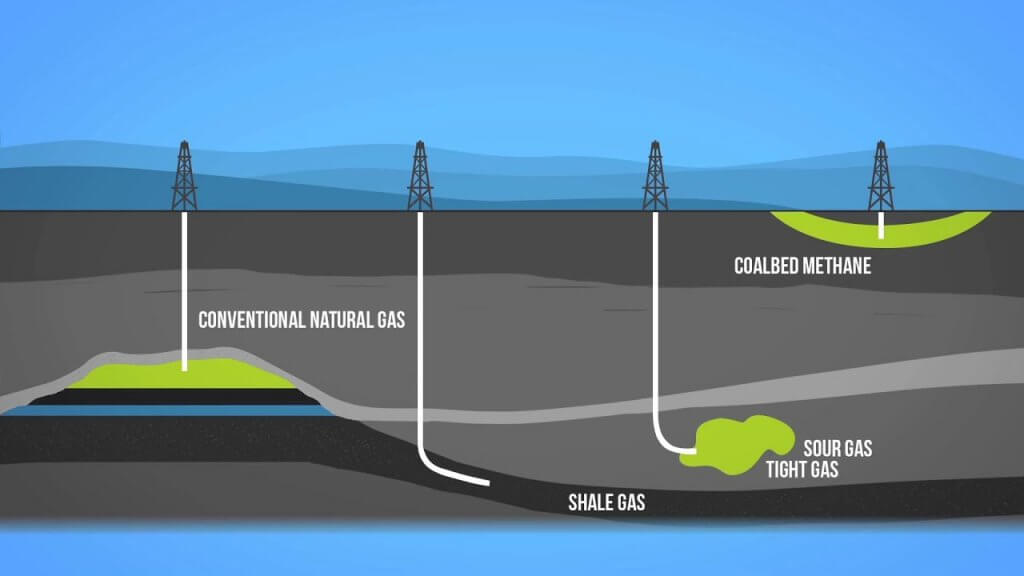
- India’s commercial production of Natural Gas started much later (since 1961).
- The natural gas industry in India began in the 1960s with the discovery of gas fields in Assam and Gujarat.
- After the constitution of GAIL in 1984, there has been much emphasis on Natural Gas production.
Natural Gas Formation
Natural Gas is formed when layers of decomposing plant and animal matter are exposed to intense heat and pressure under the surface of the Earth over millions of years.
The energy that the plants originally obtained from the sun is stored in the form of chemical bonds in the gas.
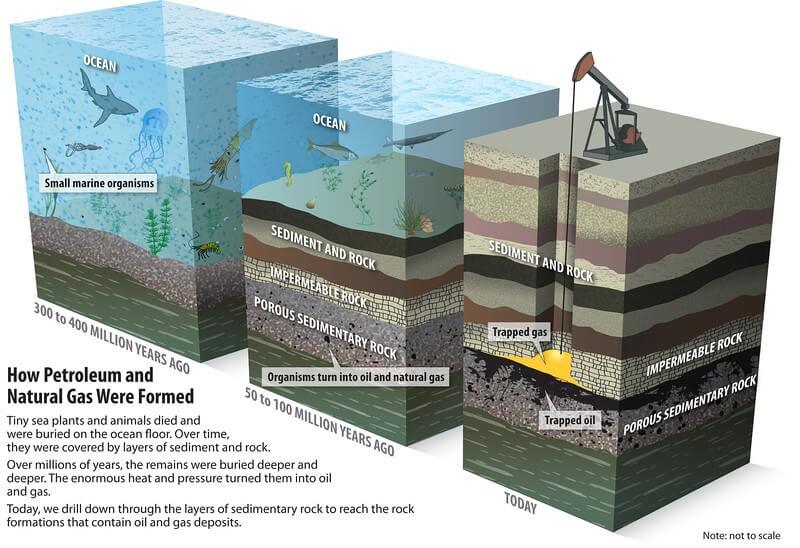
Uses of Natural Gas
- Natural Gas was used mainly for street and household lighting in the 19th and 20th centuries.
- Now, it has a lot more uses in homes and industrial applications.
- It is used to turn turbines for wind and solar energy generation.
- It is a domestic fuel as well. It fires stoves in our houses and also runs heaters, ovens, boilers, etc.
- Compressed Natural Gas or CNG, that is gas stored at high pressure, is also used in some households for heating and cooking purposes.
- CNG is also a cheap and environment-friendly alternative for a transportation fuel used in low load vehicles requiring high fuel efficiency.
- Liquefied Natural Gas or LNG is used to power vehicles such as off-road trucks and trains.
- Electric power generation.
- Many buses and commercial automotive fleets now operate on CNG.
- It is an ingredient in dyes and inks.
- Used in rubber compounding operations.
- Ammonia is manufactured using hydrogen derived from methane. Ammonia is used to produce chemicals such as hydrogen cyanide, nitric acid, urea, and a range of fertilizers.
Importance of Natural Gas to India
- Currently, the largest share of Natural gas, about 40%, is consumed in the production of fertilizers.
- About 30% is used in power generation and 10% is used in LPG. There have been complimentary growth in Natural Gas production and all of these sectors. Especially after 1971, there has been a manifold increase in the production of Natural gas.
- Power stations using gas accounted for nearly 10 percent of India’s electricity.
- Despite the country reeling under a power crisis, gas power stations are lying idle due to a lack of feedstock.
- Existing plants are operating below capacity on expensive imported liquefied natural gas (LNG).
- India’s oil reserves are insufficient for its growing energy needs and the situation is made worse by policy paralysis which increases the gestation period of the projects.
- We need to diversify our energy basket through alternate fuels so that we need not have to bear the brunt of external shocks.
- Natural gas contributes to about a quarter of global energy consumption. In India, however, it constitutes only 6% of the energy consumed, while crude oil and coal dominate. The Indian government has promised to raise the share of natural gas to 15% by 2030.
Distribution of Natural Gas in India
- Gulf of Kutch, Gulf of Khambhat, Bassein field, Bombay High, Barmer in Rajasthan, KG basin, Cuddalore district of Tamil Nadu, Odisha, Assam, Tripura, etc.
- India’s economically viable reserve of natural gas is 541 BCM (on-shore, Assam, and Gujarat), besides them 190 BCM offshore in Bay of Cambay and 190 BCM(billion cubic metres) in Bombay High.
- Recently a huge reserve of 400 BCM is reported in Tripura Basin. Besides them, 72 BCM is in the Rava structure and a huge reserve is reported around Andaman and Nicobar island.
- On the basis of remote sensing information, Andaman and Nicobar reserves are estimated to be around 1700 BCM. Its economic viability is yet to be established, that’s why production has not yet started. This reserve will solve the problem or need of India for 100 years. This may produce an economic revolution in eastern India.
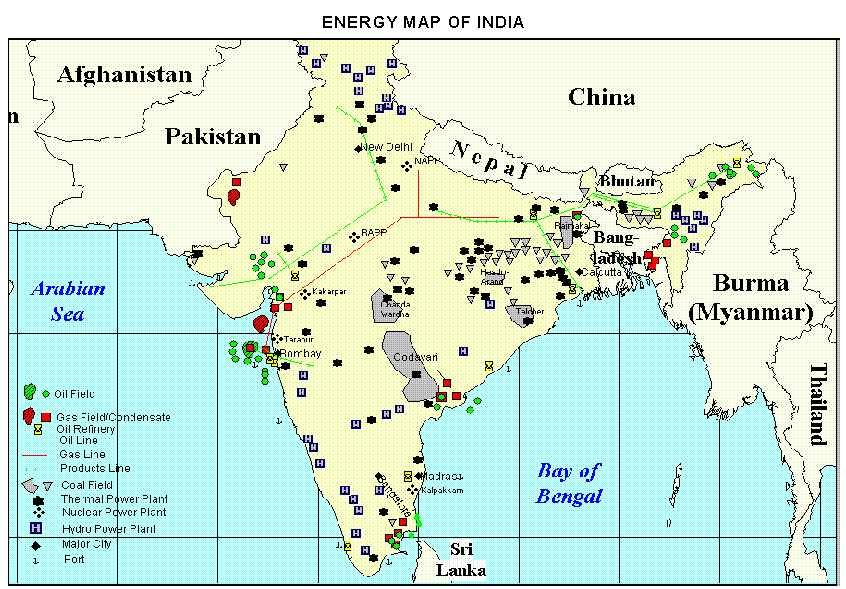
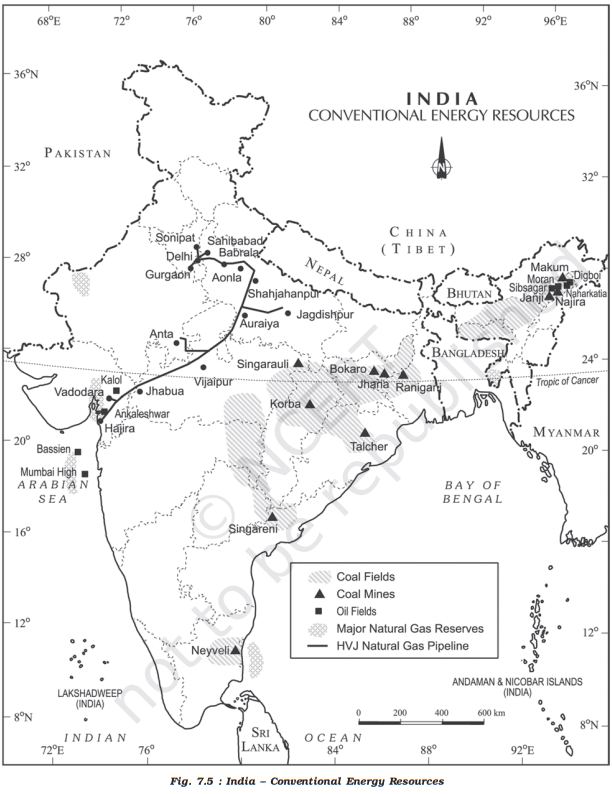
Some Milestones
- 1988-89
- Oil strikes at Cauvery offshore and at Nanda in Khambhat basin, besides gas found in Tanot in Jaiselmer basin in Rajasthan were major discoveries.
- 1988
- Production from South Bassein Gas Field started in September 1988.
- 1989-90
- During 1989-90 oil/gas structures had been discovered in Adiyakkamanglam in Tamil Nadu, Andada in Gujarat, Khovaghat in Assam, Lingla in Andhra Pradesh, Mumbai Offshore and Kachchh offshore.
- 2002
- Krishna-Godawari basin
- The gas discovered by Reliance Industries in the deep waters of the Krishna-Godavari off-shore basin has brought the sector into sharp focus.
- It is reported to be the largest discovery of natural gas in the world in the year 2002 and compares with global findings in the past in the Gulf and Sakhalin Island. The reserves are estimated to 14 trillion cubic feet. The field is 200 km into the sea from Vishakhapatnam.
- This is the deepest oil exploration in India. This discovery is believed to yield 60-80 million cubic metres of natural gas per day from a single field.
- Krishna-Godawari basin
- 2003
- In the Barmer district of Rajasthan also, gas was discovered along with crude oil in 2003
- 2004
- In yet another gas discovery, Reliance Industries struck gas off the Orissa coast in the Bay of Bengal in June 2004.
- 2005
- In June 2005, Oil and Natural Gas Corporation (ONGC) made a significant hydrocarbon find in the shallow waters of Krishna Godawari basin, south-west of Rava field discovered by ONGC in 1987. The new find is around 12 km from the Amalpuram coast.
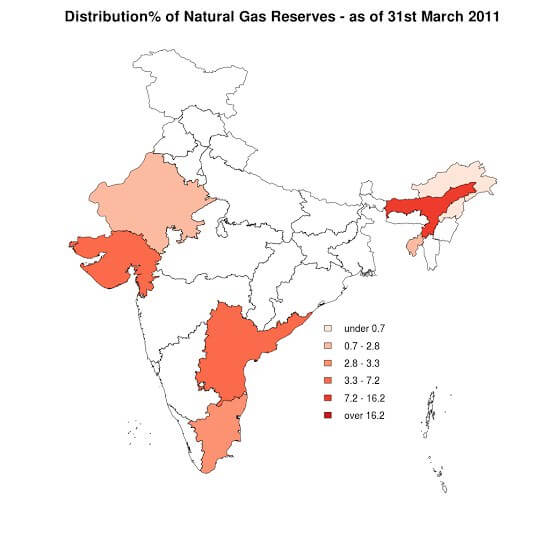
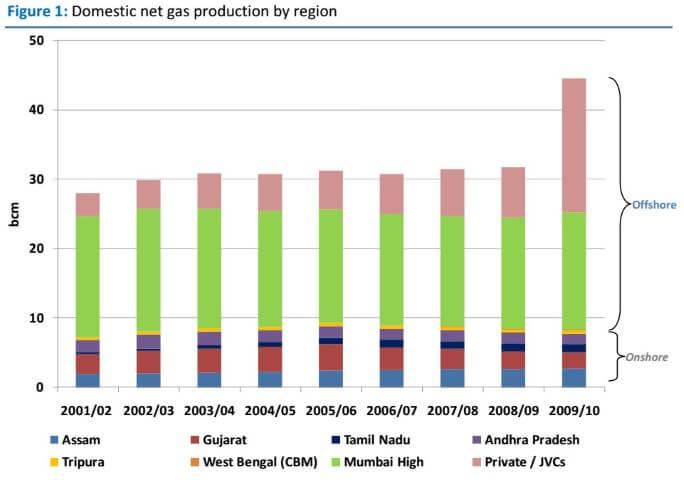
Oil and Natural Gas Corporation (ONGC)
- Oil and Natural Gas Corporation (ONGC) is a Maharatna Public Sector Undertaking (PSU) of the Government of India.
- It was set up in 1995 and is under the Ministry of Petroleum and Natural Gas.
- It is the largest crude oil and natural gas company in India, contributing around 70% to Indian domestic production.
- The ONGC is the highest profit-making corporation in India (USD 5 billion). It also the largest Indian company in oil exploration
- ONGC Videsh Ltd (OVL) has a presence in 16 countries esp. in Latin America, Africa, Middle East, CIS, and the Far East
- OVL’s first overseas oil exploration project was the Rostam and Raksh oil fields in Iran.
- OVL’s first major oil find was the LanTay and LanDo oil fields in Vietnam.
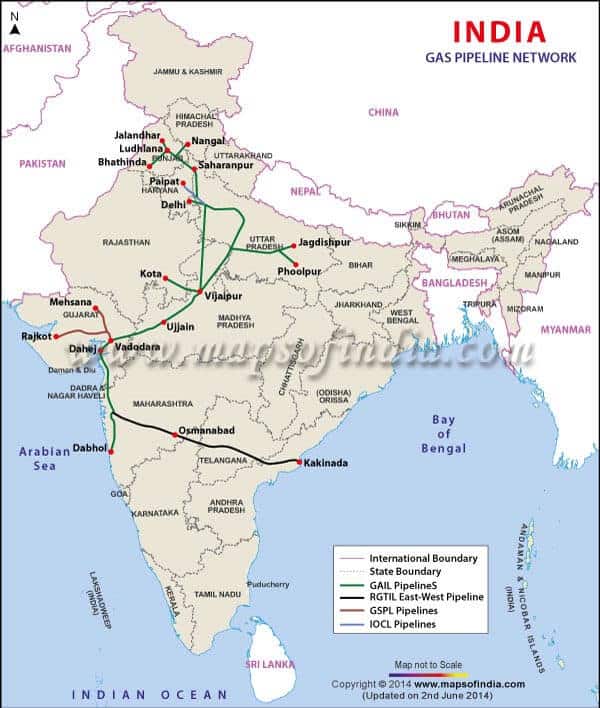
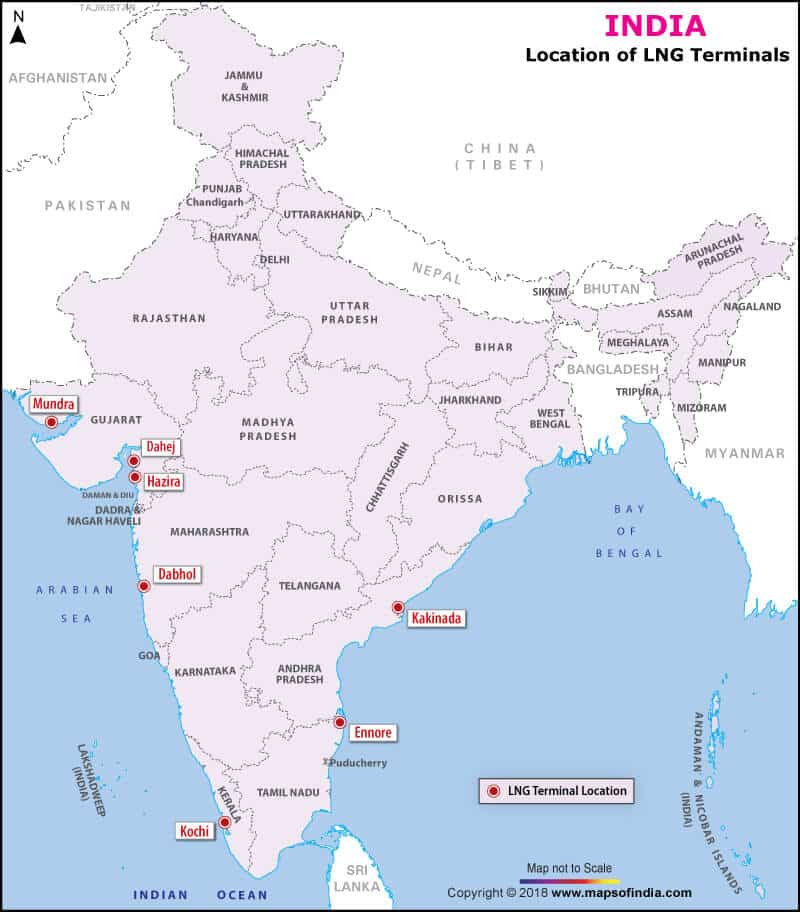

VERY HANDY MATERIAL…THANK U SO MUCH FOR A KIND HEARTED SIR AND WHOLE TEAM
Most Welcome, Imran S
Thank you for this information
Really inclusive article. Would prefer using some inputs for preparing my lectures for Oil executives